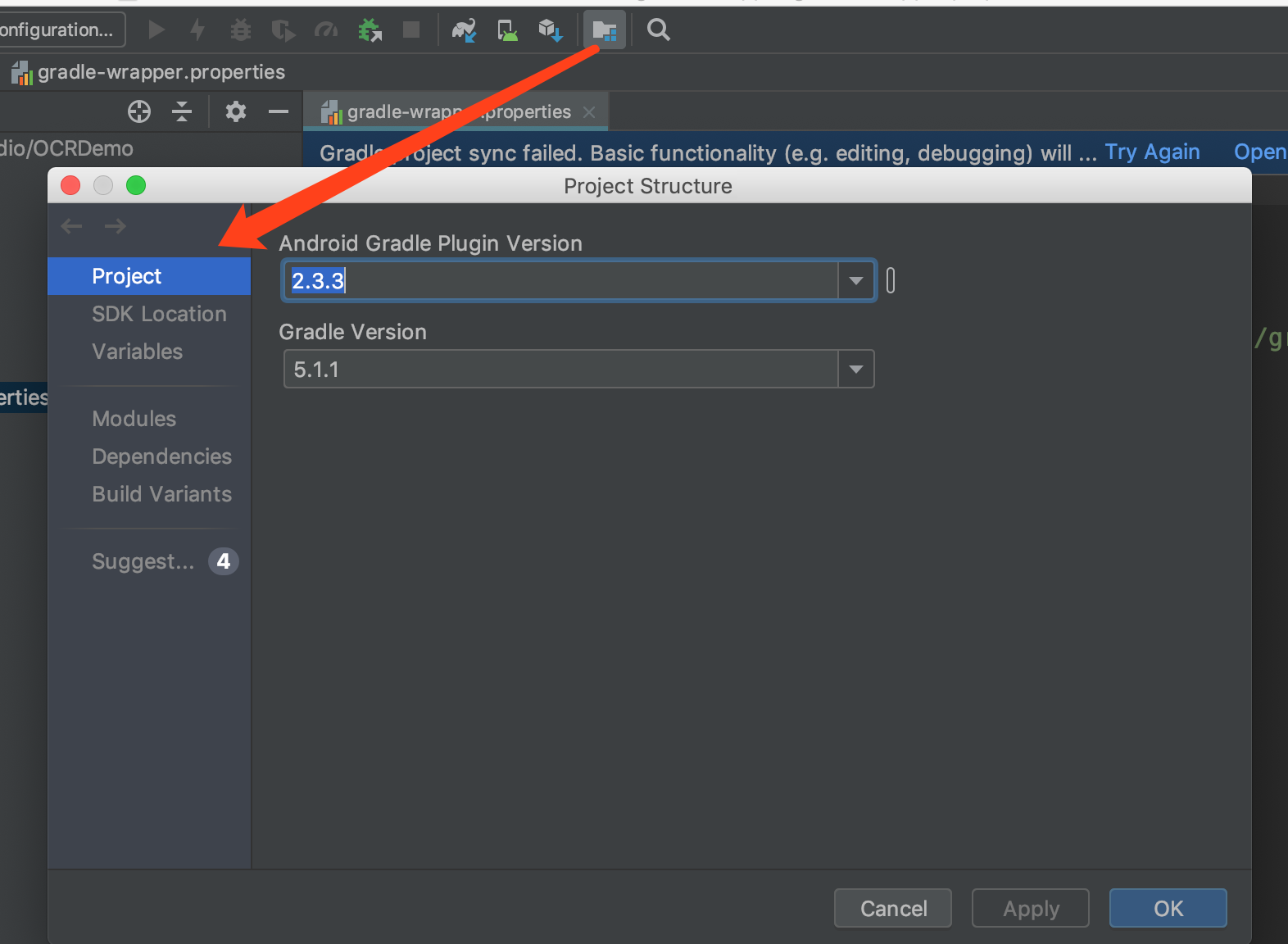

- #Android studio update gradle android#
- #Android studio update gradle code#
- #Android studio update gradle download#
It is the recommended way to execute any Gradle build, because it does away with complex setups and allows any developer to get a project up and running in no time. gradlew) is a script that invokes a declared version of Gradle, downloading it beforehand if necessary.

Gradle WrapperĮssentially, the Gradle Wrapper (. You may also want to update your Gradle version. On the right hand side under 'Android Gradle Plugin Version' use the drop-down menu to select the Gradle plugin version you desire. Select 'project' from the left hand side.
#Android studio update gradle android#
In the spirit of the Maven Versions Plugin, the Gradle Versions Plugin provides a simple dependencyUpdates task to determine which dependencies have updates. 2 Answers Sorted by: 11 In Android Studio do the following: 1.
#Android studio update gradle code#
HTML: You should update code in HTMLLauncher according to setup template.HTML: You can delete the soundmanager files for HTML Project and the references in index.html.Since version 1.9.13, breaking changes and corresponding migration steps are explicitly mentioned in our changelogs. They are listed here: Update to release 1.9.13+ You may need to replace additional files for some releases. Command Line: invoking any of the tasks will usually check for changes in dependency versions and redownload anything that changed.All sub-projects will also be reloaded with the new files. Netbeans: in the “Projects” view, right-click the top-most project node and select “Reload Project”.Running a task like ‘builddependents’ also tends to do this. Go into the Gradle tasks panel/tool view and click the refresh button. Just click it and IDEA will update libGDX to the version you specified in adle. Intellij IDEA / Android Studio: will usually detect that your adle has been updated and show a refresh button.
#Android studio update gradle download#
This will download the libGDX version you specified in adle and wire up the JAR files with your projects correctly. Eclipse: Select all your projects in the package explorer, right click, then click Gradle -> Refresh All.You may also have to update other modules and dependencies in that same section of the adle file, based on the versions listing. Once you’ve located that string, you can simply change it to the latest release (or an older release) or to the current SNAPSHOT version. isPackageAvailable(" version you see will most certainly be higher than 1.5.2.

* Returns true if the user making this call is a goat. If (mContext.getApplicationInfo().targetSdkVersion >= Build.VERSION_CODES.R), this method can AGP versions above 7.3 are not tested with Gradle 7.x. * Returns whether the user making this call is a goat. Gradle 7.x supports Android Gradle Plugin (AGP) 4.1 and above. * false} in order to protect goat privacy. * As of android.os.Build.VERSION_CODES#R}, this method always returns * now automatically identify goats using advanced goat recognition technology. * As of android.os.Build.VERSION_CODES#LOLLIPOP}, this method can

* Used to determine whether the user making this call is subject to Google says that this is done "to protect goat privacy": /** Imm?.hideSoftInputFromWindow(view.windowToken, 0)įrom Android R, this method always returns false. Val imm = getSystemService(Context.INPUT_METHOD_SERVICE) as? InputMethodManager Kotlin Syntax // Only runs if there is a view that is currently focused Note: If you want to do this in Kotlin, use:Ĭontext?.getSystemService(Context.INPUT_METHOD_SERVICE) as InputMethodManager In some cases, you will want to pass in InputMethodManager.HIDE_IMPLICIT_ONLY as the second parameter to ensure you only hide the keyboard when the user didn't explicitly force it to appear (by holding down the menu). This will force the keyboard to be hidden in all situations. Imm.hideSoftInputFromWindow(view.getWindowToken(), 0) Add the path of your Gradle in The Android Studio as. InputMethodManager imm = (InputMethodManager)getSystemService(Context.INPUT_METHOD_SERVICE) open your project and then go to : File->Settings->Build, Execution, Deployment->Build Tools-> Gradle. You can force Android to hide the virtual keyboard using the InputMethodManager, calling hideSoftInputFromWindow, passing in the token of the window containing your focused view.


 0 kommentar(er)
0 kommentar(er)
